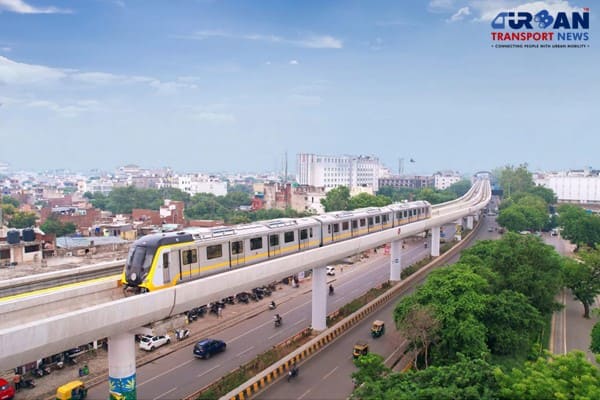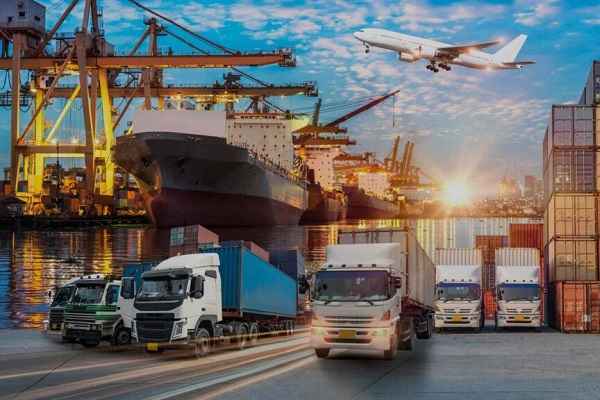 How Weigh-in-Motion Systems Are Revolutionizing Freight Safety
How Weigh-in-Motion Systems Are Revolutionizing Freight Safety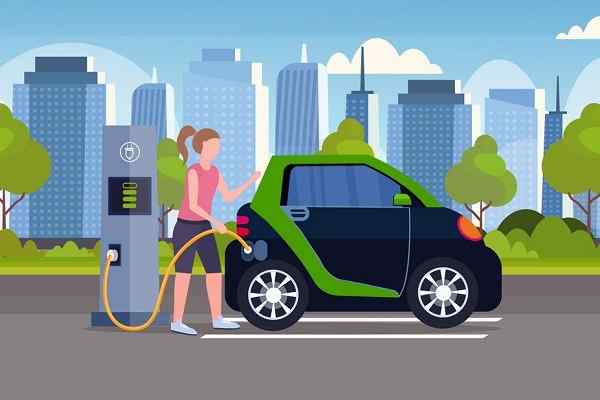 Women Powering India’s Electric Mobility Revolution
Women Powering India’s Electric Mobility Revolution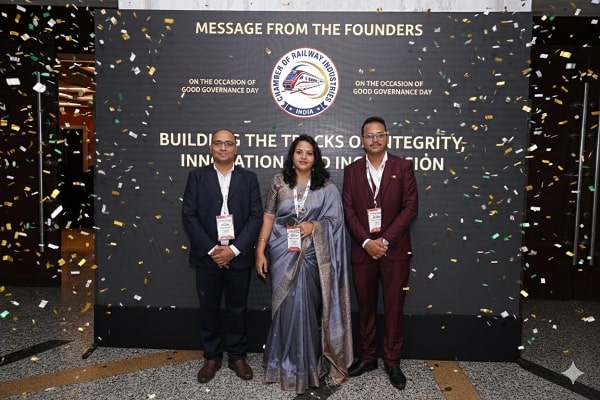 Rail Chamber Launched to Strengthen India’s Global Railway Leadership
Rail Chamber Launched to Strengthen India’s Global Railway Leadership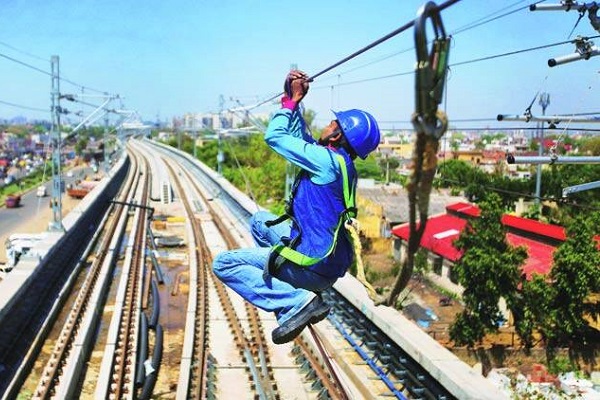 Wage and Hour Enforcement Under the Massachusetts Wage Act and Connecticut Labor Standards
Wage and Hour Enforcement Under the Massachusetts Wage Act and Connecticut Labor Standards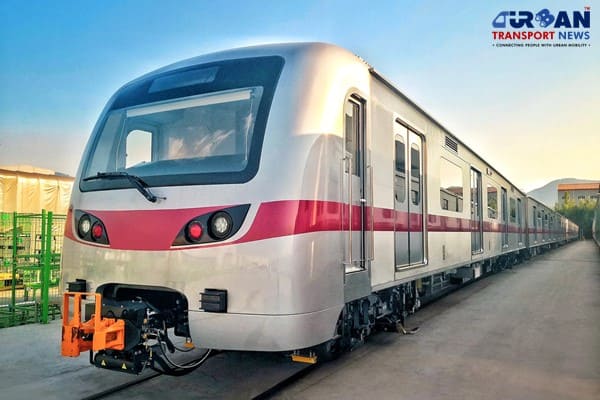 MRT‑7: Manila’s Northern Metro Lifeline on the Horizon
MRT‑7: Manila’s Northern Metro Lifeline on the Horizon Delhi unveils ambitious Urban Mobility Vision: Luxury Metro Coaches, New Tunnels and Pod Taxi
Delhi unveils ambitious Urban Mobility Vision: Luxury Metro Coaches, New Tunnels and Pod Taxi Qatar approves Saudi Rail Link Agreement, Accelerating Gulf Railway Vision 2030
Qatar approves Saudi Rail Link Agreement, Accelerating Gulf Railway Vision 2030 UP Govt plans to introduce Water Metro services in Ayodhya, Varanasi & Prayagraj
UP Govt plans to introduce Water Metro services in Ayodhya, Varanasi & Prayagraj India’s First Urban Ropeway begins Trial Run in Varanasi, Set to carry 1 Lakh passengers daily
India’s First Urban Ropeway begins Trial Run in Varanasi, Set to carry 1 Lakh passengers daily India and Bhutan to Build First-Ever Rail Link: ₹4,033 Cr Project to Boost Regional Connectivity
India and Bhutan to Build First-Ever Rail Link: ₹4,033 Cr Project to Boost Regional Connectivity
Exclusive Interview: KVB Reddy, MD & CEO, L&T Metro Rail Hyderabad Ltd
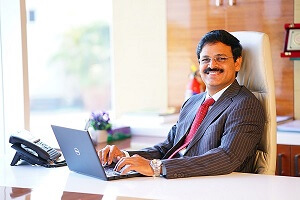
KVB Reddy is Managing Director and Chief Executive Officer of L&T Metro Rail (Hyderabad) Limited. He has a Bachelor’s Degree in Mechanical Engineering from Regional Engineering College now known as NIT), Bhopal. He has also completed his Master’s in Business Administration from the Indira Gandhi National Open University. He started his career with NTPC Delhi, as an Engineering Executive Trainee in the year 1983 and rose to the position of Manager (Planning & Systems-NCR), in which position, he worked up to February 1995. Prior to joining L&T, he was the Executive Director of Essar Power Limited and was associated with Essar for the last 22 years. He has had a long career in the Power sector, both in Concessionaire and EPC side, and brings with him 34 years of rich experience. His areas of expertise include Procurement, Project coordination and development, Operations & Maintenance, Business Development, Project Execution, EPC, Project Financing, Commercial, and Business Strategy. In a recent interaction with Urban Transport News team, he talks on the various aspects of the PPP model in metro rail sectors and how the Hyderabad Metro Rail project became the World's Largest Metro Rail Project under the PPP model? Here are edited excerpts:
Almost two years since the project has been launched how do you see it has shaped up - are you happy with passenger’s response?
Mr. KVB Reddy: Hyderabad Metro Rail has become a lifeline for public commute in Hyderabad. With the opening of the Raidurg section recently, it is more so. This project is a unique example of a successful PPP model in public transport in India. Hyderabad Metro Rail has made a significant impact on the commuting behaviour of the people in Hyderabad. This has been possible with all the hard work, support and collaboration of all our employees, partners, stakeholders, media friends and contractors. I am thankful to all the citizens of Hyderabad for welcoming and adopting Hyderabad Metro in an overwhelming manner. They have filled us with zeal to strive harder and serve them better. We have won the trust of the citizens because our operations are accurate, timely, safe, secure, gender-friendly and comfortable. Hyderabadis do understand and are sure of reaching a destination at a stipulated time and are not at the mercy of traffic conditions on roads.
Are there any take-aways from the passenger’s experiences so far and has it made you change certain processes in operating the metro rail services?
Mr. Reddy: We have Engaged, Equipped and Empowered our commuters, through all possible media and communication channels. We enabled them to understand HMRs goals and values, understand operations and services and also to speak to the customer service centres at various stations. Passenger advocacy has been a very important communication channel for L&T Metro Rail (Hyderabad) Limited, and we made it authentic and natural. Various measures like the customer service help centers, call center, website, social media etc., have helped them talk about our services in their own voice and communicate the aspects that make our service unique both good and bad. Our endeavor has always been and will always remain to consistently provide best-in-class passenger services and maintain 100% timeliness. We are sure, going forward, the passenger numbers will further improve along with the betterment of our services. TSavaari App is very user-friendly and the QR Code AFC access with different service providers has been a new addition to facilitate easy access for our commuters.
What have been the key challenges in the run-up to the launch of the services and from there on?
Mr. Reddy:
- Pre-Construction
- Underground utilities and no readily available drawings. A lot of surprises in store.
- Involvement of too many Govt. agencies with very lengthy procedures.
- Clash of interest between various departments.
- Dealing with Railways/Defence
- Long-drawn process of approvals.
- Support from GOT/MOR/MOD
- Land
- Responsibility of procuring Right of Way (ROW) and land rests with Govt. Delay in this activity is detrimental to the project.
- The private acquisition is difficult with lengthy procedures.
- Social considerations need to be factored – A challenging assignment.
- The risk for concessionaire if construction commences before the availability of complete land parcels and unhindered availability of ROW.
- Lack of continuous ROW in a linear project like Metro.
- Difficulties in procuring technically required ROW in congested areas.
4. Alignment Finalization
- Limitation on sharp curve < 130.
- Frequent changes even after finalization of alignment, necessitated due to property acquisition challenges.
- Design
- Design reworks due to uncertain ground features.
- Lack of standardization in the Metro Sector.
- Concurring engineering resulting due to – Underground utility diversions and frequent changes in finalized alignments.
- System Integration
- Involves complex system integration for the fully functional operating system.
- Traffic Management
- Limited availability of ROW and limited road width in core areas of the city.
- Ridership
- Lack of definitive data, which is heavily dependent on city development
- First & Last Mile connectivity.
- Non-Fare Revenues.
- Unpredictable economic growth both in the country and city.
- Financial Challenges
- Volatile financial market.
- Interest rate fluctuations during construction.
- Large Foreign Exchange Exposure – Volatility of Rs vs. USD & Euro.
- Cost overrun risk – Delays resulting in cost increase and inflation of inputs.
10. Operation and Maintenance Risk
What can passengers expect in the near future about improvement in services - first & last-mile connectivity, frequency, common ticket & so on?
Mr. Reddy: Smart Cards provides hassle-free transport, easy recharge methods and lifetime validity. With around 10 lakh smart card users in the city and the number expected to rise sharply as commuters are shifting towards Smart Cards which fetch 10% discount on all trips. We have taken several initiatives to improve the ridership experience of commuters like providing free water, free toilets, exclusive ladies section, cross-sell offers, complimentary newspapers etc., Given its commitment to transform the lives of the people of Hyderabad through ‘best-in-class’ mobility, connecting and creating vibrant urban spaces. L&TMRHL has introduced various Last Mile Connectivity options like electric vehicles, rent a bike service, rent a bi-cycle service, cab aggregator service and bus service at Metro stations.
When can we expect Corridor II to be launched? And, how do you think Hyderabad as a city could change once all three corridors are completed?
Mr. Reddy: Shortly. Hyderabad Metro Rail Project has already transformed Hyderabad into one of India's most futuristic cities, with integrated urban transportation using inter-modal connectivity. I am sure with the completion of all three corridors will mark the beginning of an era of seamless and hassle-free commuting in Hyderabad. Life of Hyderabadis will itself undergo a quantitative and qualitative change for better. We are committed to enhancing the quality of life for the people through a sustainable transport network, integrated with vibrant urban spaces and make Hyderabad Metro an integral part of one’s daily life Hyderabad Metro Rail is an iconic infrastructure project in India. It has already triggered robust economic activity in and around the city and is also generating substantial employment. This trend will continue for a time to come and with the entire stretch being operational.
How do you see the public, private partnership mode of constructing projects taking shape in the current economic scenario?
Mr. Reddy: PPPs are all about balance: maintaining equilibrium between public and private, risk and reward, cost and impact. A PPP structure will ensure better value for money, higher performance incentives, apart from faster construction and cost-effective delivery. The accountability is well-defined, and the risk is with the PPP player. I will speak only about the Metro Rail Projects here. It is always important to have a robust model for the execution of such PPP projects with a clear change of mindset of all the concerned. A robust mechanism for redressal and risk-sharing is essential.
Challenges faced in the sector: If these challenges are addressed in the current economic scenario, I am sure metro rail projects will excel.
- In the pre-construction stage, difficulties are being faced because no comprehensive map of underground utilities was available.
- Encumbrances related to land, such as acquiring continuous right of way and acquisition of private land, are also responsible for delays in project execution.
- The support that government agencies should extend to metro rail concessionaires. Though several opportunities are available in the metro sector, the government should ensure that coordinated time-bound approvals from different government agencies both at the Central and state levels will definitely ease the pains presently being felt.
- Standardization of technical specifications and unification of the same across the country which will help in a great way.
- Financial challenge for funding such long gestation Infra Projects is basically to Private companies. Special funding with low interest and for long duration or funding tied with International agencies to provide Low Interest, unfortunately, is not available to private entities.
What is the impact of Transit Oriented Development (TOD)?
Mr. Reddy: Hyderabad Metro Rail Project is the World’s Largest Public-Private Partnership Project in the Metro Sector. Cities are modern-day nerve centers of growth. They are magnets for capital and for large, multi-cultural and multi-ethnic groups of people. Cities can generate energy that can transform communities and accelerate the pace of progress. Hyderabad Metro Rail is a Mass Rapid Transport Systems (MRTS) which is enabling the city to realize its full potential for growth and economic development. High-speed, high-quality urban transport catalyzes the development and real estate value of the areas it connects. Hyderabad is seeing a similar transformation through the Hyderabad Metro Rail Project wherein, already vibrant micro markets are getting further uptick, whereas nascent micro markets are becoming vibrant. A similar phenomenon was noticed in Delhi, London, and other cities. Uppal/Nagole and Miyapur are such terminal hubs that have transformed significantly; thanks to Hyderabad Metro Rail. An estimated 12.5 million sq. ft out of the total 18.5 million sq. ft of Transit-Oriented Development (TOD) will be developed at these terminal hubs of the Hyderabad Metro Rail Project. TOD integrated with the Metro Rail will help in operational cost arbitrage for companies by reducing employee transportation costs significantly, apart from enhancing the quality of life of the workforce. For the retail segment, it enables higher footfalls.
Social Initiatives L&T Metro Rail believes in giving back to the society and we have engaged with differently-abled and orphan school children by giving them a joy ride in Hyderabad Metro Rail. During this process, they were familiarized with the onboarding and deboarding process into the station from street level to the concourse, enroute ticketing counter to the platform and then to the train. Hyderabad Metro Rail design is disability friendly and the blind students used the tactile flooring to trace their path successfully. It was indeed a heart-warming experience for everyone involved.
What are your views on the contents we covered in Urban Transport News publications i.e. online news portal and bi-monthly magazine?
Mr. Reddy: Urban Transport News concisely presents the latest developments in the transportation sector and also highlights the policy and industry updates. The online version is handy and is updated regularly. Urban Transport Infrastructure (Bi-monthly) Magazine provides an in-depth review of the sector and the insights provided by industry leaders throw light on the future and the issues that need to be addressed.





